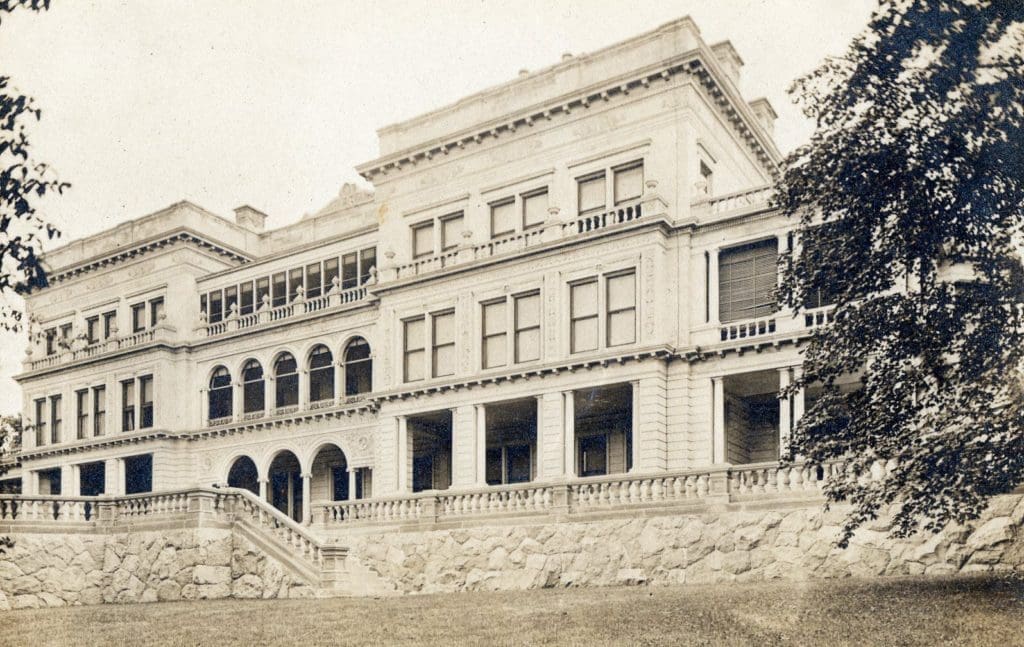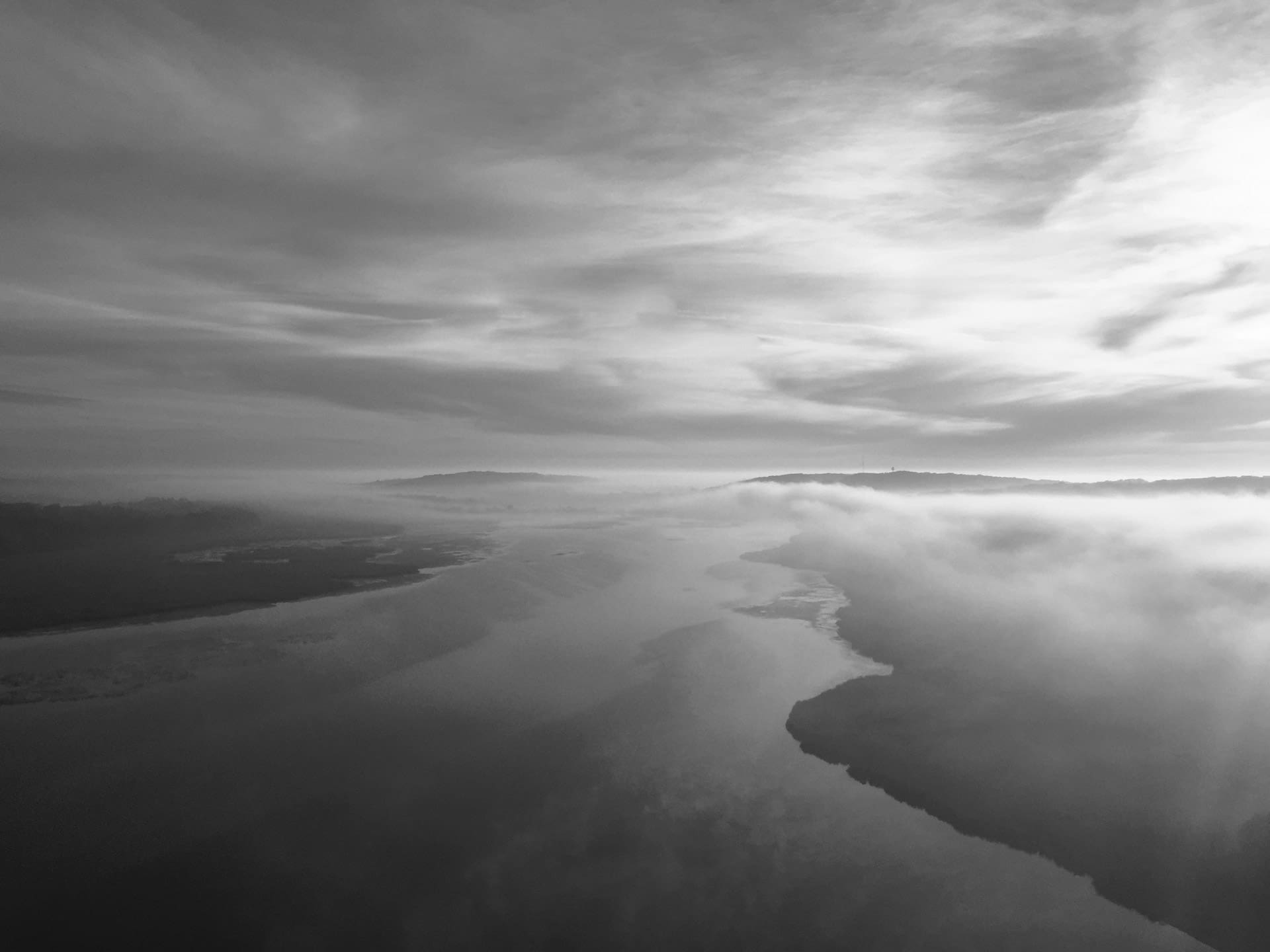On the surface, Lake Geneva, Wisconsin, looks like your typical midsize Midwestern town, with its petite downtown district, fast-food outposts, and single-family homes surrounded by chain-link fences. But dig a little deeper, and a different side of Lake Geneva begins to emerge.
Situated alongside the namesake body of water are the sprawling multimillion-dollar estates of historically affluent Chicagoans like the Sears, Schwinn and Wrigley families — the last of whom owned six lakefront properties until last spring, when the 11,000-square-foot Hillcroft manse sold for a cool $11.25 million.
How did this small Wisconsin town end up dotted with real estate that’s priced up to $40,000 per foot of shoreline? It became a hot spot for the well-to-do thanks to a confluence of factors: the launch of the Chicago and North Western railway (nicknamed the Lake Geneva Express) in the 1850s, the Chicago Fire of 1871 and industrial Chicago’s filthy living conditions at the turn of the 20th century.
On June 11, 1856, a crowd — complete with a marching band and 13-gun salute — gathered at the Lake Geneva train depot to welcome the very first train from the Windy City, comprising six coaches and carrying 600 passengers. The excitement was short-lived, however, as an economic downturn the following year halted service and new investment. That is until 1871, when Lake Geneva captured the attention of wealthy Chicagoans looking to trade the soot-filled city for small-town charm.

Photography provided by the Lake Geneva Balloon Co.
Shelton Sturgis, heir to a grain elevator fortune, spearheaded what would become the Chicago and North Western railway by convincing the railroad to extend a line along the abandoned tracks. On July 20, 1871, the first train in nearly 15 years made its way to Lake Geneva, and by July, regular service was established to the end-of-the-line destination, with fate sealing the railway’s success just months later.
In October 1871, the Great Chicago Fire ravaged the Windy City, destroying thousands of acres of property, rendering nearly a third of residents homeless and leaving the city dirtier than ever. Wealthy families like the Maytags sought to escape the smoldering metropolis and opted to erect luxurious “cottages” along the shores of Lake Geneva. Eventually it became tradition that women and children would summer here while working men shuttled back and forth on the train, cementing Lake Geneva as the go-to getaway for affluent Chicagoans like the Wrigleys.
Until the Hillcroft sale in 2018, the family of the chewing gum fortune owned a total of six properties, claiming the most shoreline footage. With several influential family members staunchly opposed to the subdivision of properties that has slowly dismantled many Lake Geneva estates, the Wrigley clan still owns several, including Green Gables, which sits on 15 acres of shoreline property and comes complete with boathouses designed to hold four yachts, like the 33-foot-long 1933 mahogany Hacker Craft that can still be seen on the water on occasion today.
But it wasn’t just family-focused summer homes that cropped up here as the destination’s popularity blossomed. The Frank Lloyd Wright–inspired structure that today stands as the Grand Geneva Resort & Spa was originally the home of the Lake Geneva Playboy Club Hotel. In fact, it was the first such resort in the country.
This quiet Midwestern lake town became host to a cadre of bushy-tailed Playboy Bunnies as government officials cut ribbons with Hugh Hefner himself on May 6, 1968. Over the years, the club hosted celebrities like Bob Hope and Sonny & Cher on its cabaret stage. According to Hefner’s daughter, the Lake Geneva outpost was one of his favorites, namely for its design and its early debut. The club shuttered in 1981 amid financial problems and changing tastes.
The lake’s guest list didn’t stop with Hollywood celebrities. Even notorious Chicago gangsters like Al Capone couldn’t resist the charm of this small town, which served as a low-key pit stop on his way north. The kingpin ran a speakeasy in Wisconsin’s northwoods and often stopped here on his way to and from his illicit business.

Photography provided by the Lake Geneva Balloon Co.
The WatersEdge B&B in particular was a favorite of several Windy City mobsters, including Adelard Cunin, better known as Bugs Moran. John Dillinger and Baby Face Nelson favored the Lake Como Hotel (today the French Country Inn) as a spot to escape the heat of the summer and the cops. In fact, it was on a trip between Lake Geneva and Chicago that Baby Face met his end in a clash with authorities, according to FBI reports.
Thanks to its fabled history, Lake Geneva remains a desirable summer destination for both the affluent and the ordinary, who flock to the lake to gawk at the waterfront estates from the public Shore Path and watch newspapers being delivered to the sprawling mansions by boat.
While staying in an estate is off the table for most, the town is speckled with delightful accommodations, like the Baker House near the water, which boasts an exceptional brunch, and its sister property, Maxwell Mansion, which comes complete with a subterranean apothecary bar. In addition to enjoying lake life, visitors can sip on local wines at Studio Winery and nosh on steak and seafood at the elegant Hunt Club Steakhouse situated in a Palladian-style estate.
When it comes time to leave, those who aren’t ready to part with the charming town can take a piece of it home courtesy of popular estate shop 281 Sheridan Springs. With a piece of history in tow, visitors can appreciate Lake Geneva’s unusual legacy long after they depart.
The Hallowed Homes of Lake Geneva
Three of the town’s most stately estates.

Photography provided by Geneva Lake Museum
Black Point Estate
Built as the summer home of Chicago beer baron Conrad Seipp and wife Catharina, Black Point Estate originally could only be reached by boat. The 20-room Queen Anne–style mansion was completed in 1888 at a cost of $20,000. It boasted 13 bedrooms but had just one bathroom for all guests to share. Although Conrad died just two years later, his family continued to enjoy the house and maintained the original furnishings.
In 2005, William O. Petersen, Seipp’s great-grandson, donated the house, grounds and furnishings to the state of Wisconsin. After an extensive $1.9-million renovation on the state’s dime, Black Point Estate and Gardens opened for its first tours in June 2007. In 2013, the Wisconsin Historical Society assumed responsibility for the property, which today allows for a glimpse back in time.

Ceylon Court
Eventually acquired by the Maytag family of the washing machine fortune, Ceylon Court has one of the most storied pasts of all of the Lake Geneva estates. Originally constructed for the 1893 World’s Fair held in Chicago, the sprawling building is a reproduction of a temple found in ancient Sri Lanka (then Ceylon). It’s shaped like an octagon and composed of several native woods. As was often the case, Ceylon officials decided to sell the display after the event rather than spend the money to transport it across the world, and real-estate tycoon Frank R. Chandler became the lucky new owner.
Dismantled plank by plank and shipped to Lake Geneva on 26 boxcars, Ceylon Court became Chandler’s waterfront estate. He commissioned Henry Lord Gay to design an addition, still employing only native Ceylon materials. In 1901, he sold the home to John J. Mitchell, president of the Illinois Trust and Savings Bank, who opened up the property to the public. As long as visitors parked offsite, they were allowed to walk onto the grounds and enjoy the immaculate rose gardens.
The Maytag family took over ownership of Ceylon Court in 1928, and it became known as the Maytag Estate. The property was eventually subdivided, much of it becoming the Lake Geneva Youth Camp, a retreat center touting “life-changing experiences in Christ.”

Stone Manor
The largest estate ever built on Lake Geneva, Stone Manor was commissioned in 1899 by Otto Young, a German immigrant who made his way to the United States nearly penniless and made a fortune buying up and reconstructing Chicago property after the fires in the area known today as the Loop.
Stone Manor was composed of seven levels of opulence, complete with a sprawling rooftop terrace, a chandelier-adorned ballroom, and a gym alongside a miniature golf course. The entire lower level was dedicated to ice storage as it was common practice at the time to harvest ice from the frozen lake in the winter to help cool houses in the sweltering summer.
After Young’s death at the mansion in 1906, his granddaughter sold the property to a church with the intention of transforming it into a school for girls. That lasted just a couple of years, and the manse plunged into decades of financial trouble. First, it was taken by Walworth County due to back taxes and sold at auction in the sixties for a mere $75,000. Next, it housed a fancy French restaurant that eventually shuttered. Most recently, the estate was purchased in 2017 by Tina Trahan, the wife of the CEO of cable network Starz, to the tune of $13.5 million.


